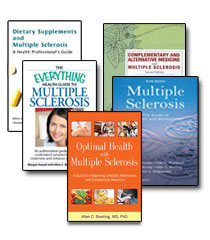The practice of yoga originated thousands of years. It was developed in India as a spiritual exercise associated with the Hindu religion. The word yoga means “union,” referring to the practice’s goal of uniting the spirit, mind, and body. Yoga focuses on breathing, posture, and movement.
Treatment Approach
Many forms of yoga are practiced throughout the world. In the United States, hatha yoga is one of the most popular forms. While practicing yoga, a number of different postures and movements, called asanas, are performed. At the same time, people focus on deep, slow breathing or specific breathing exercises, called pranayama. Various types of yoga exist, with varying degrees of difficulty. Sometimes meditation, diet changes, and ethical guidelines are incorporated into yoga practices.
Many believe the primary goal of yoga is to assume and maintain challenging postures. This is not true. Those with difficulty maintaining postures may still practice yoga. Straps, wooden blocks, and other “props” may be incorporated into yoga to make certain positions easier. Even with severe weakness in the extremities, people may still practice yoga. Typically, these individuals focus more on head and shoulder movements, breathing, and meditation. This may superficially seem different than “conventional” yoga, but it has the same core elements and focus.
Evaluation in MS and Other Conditions
There is only limited research evaluating the effectiveness of yoga as a therapy, and much of this work is hampered by poor methodology. One methodologically sound study compared yoga, conventional exercise, and no treatment for people with MS. This study reported decreased fatigue in both the yoga and exercise groups, but no effects on cognitive function or mood. Other research has found yoga may reduce stress, depression, and anxiety. Yoga may also help with headache pain and low back pain. It has also been suggested that yoga may help with muscle stiffness, but to date this claim has not been formally evaluated.
Eric Small and the southern California chapter of the National Multiple Sclerosis Society have developed an active yoga program specifically for people with MS. Small has MS and started practicing yoga over 40 years ago, just after being diagnosed. He has studied yoga in both India and England, and has adapted many classic yoga poses so they may be done by people with significant physical limitations. Many people with walkers or wheelchairs have participated in his program. His students report improvements in physical and emotional functioning, including walking, breathing, stiffness, strength, depression, memory, concentration and overall sense of well-being.
Research has been conducted evaluating yoga in other medical conditions. In diabetes, yoga may decrease both blood pressure and heart rate. For people who have arthritis, yoga may improve joint movements and decrease joint pain. In people with asthma, yoga may increase lung function, decrease medication use, and promote relaxation and a positive attitude.
Adverse Effects
Yoga is generally well tolerated and has few adverse effects. People with certain conditions should attempt difficult postures with caution. These conditions include pregnancy, recent surgeries, fatigue, heat sensitivity, impaired balance, spinal problems (i.e. herniated discs), and bone, heart, and lung conditions.
People with psychiatric disorders should discuss therapy with their psychiatrist if meditation is considered (see Meditation page). Yoga should not be used in place of conventional medicine for treating MS or significant MS-associated symptoms.
Summary
Yoga is a relatively low-cost treatment that is generally considered safe. One well conducted study found that yoga decreased fatigue in people with MS. Other studies have provided suggestive results with pain, depression, anxiety, and spasticity.
References and Additional Reading
Books
Bowling AC. Complementary and Alternative Medicine and Multiple Sclerosis. New York: Demos Medical Publishing, 2007, pp. 240-243.
Ernst E, ed. The Desktop Guide to Complementary and Alternative Medicine: An Evidence-Based Approach. Edinburgh: Mosby, 2001, pp. 76–78.
Navarra T. The Encyclopedia of Complementary and Alternative Medicine. New York: Checkmark Books. 2005, pp. 164–172.
Polman CH, Thompson AJ, Murray TJ, Bowling AC, Noseworthy JH. Multiple Sclerosis: The Guide to Treatment and Management. New York: Demos Medical Publishing, 2006, pp. 164–165.
Riley D. Hatha yoga and meditation for neurological conditions. In: Oken BS, ed. Complementary Therapies in Neurology. London: Parthenon Publishing, 2004, pp. 159–167.
Ross R. Yoga as a therapeutic modality. In: Weintraub MI, Micozzi MS, eds. Alternative and Complementary Treatments in Neurologic Illness. New York: Churchill Livingstone, 2001, pp. 75–92.
Journal Articles
Despres L. Yoga and MS. Yoga J July/August 1997;96–103.
Nayak NN, Shankar K. Yoga: a therapeutic approach. Phys Med Rehabil Clin N Amer 2004;15:783–798.
Oken BS, Kishiyama S, Zajdel D, et al. Randomized controlled trial of yoga and exercise in multiple sclerosis. Neurol 2004;62:2058–2064.
Pilkington K, Kirkwood G, Rampes H, et al. Yoga for depression: the research evidence. J Affect Disord 2005;89:13–24.






